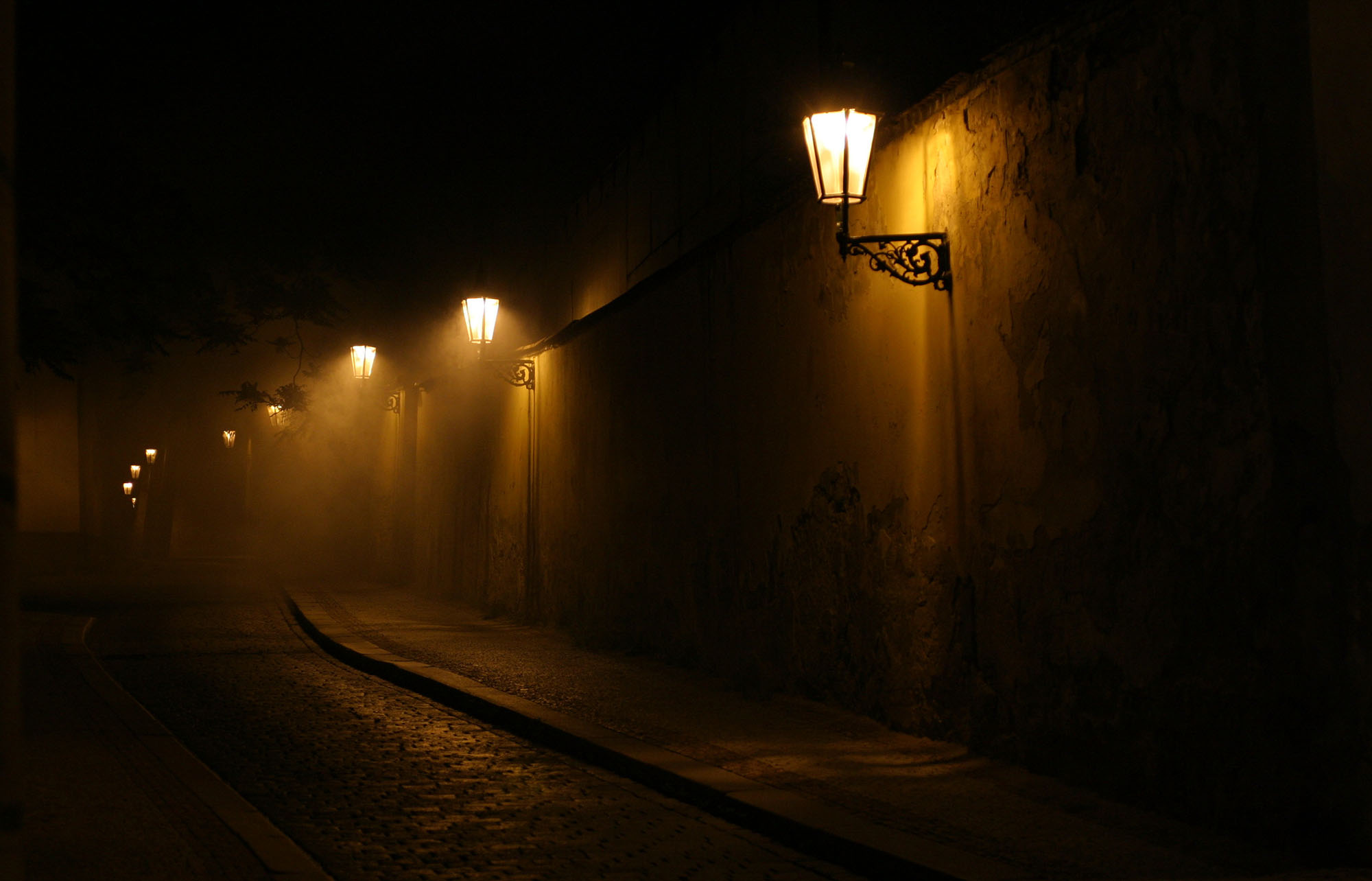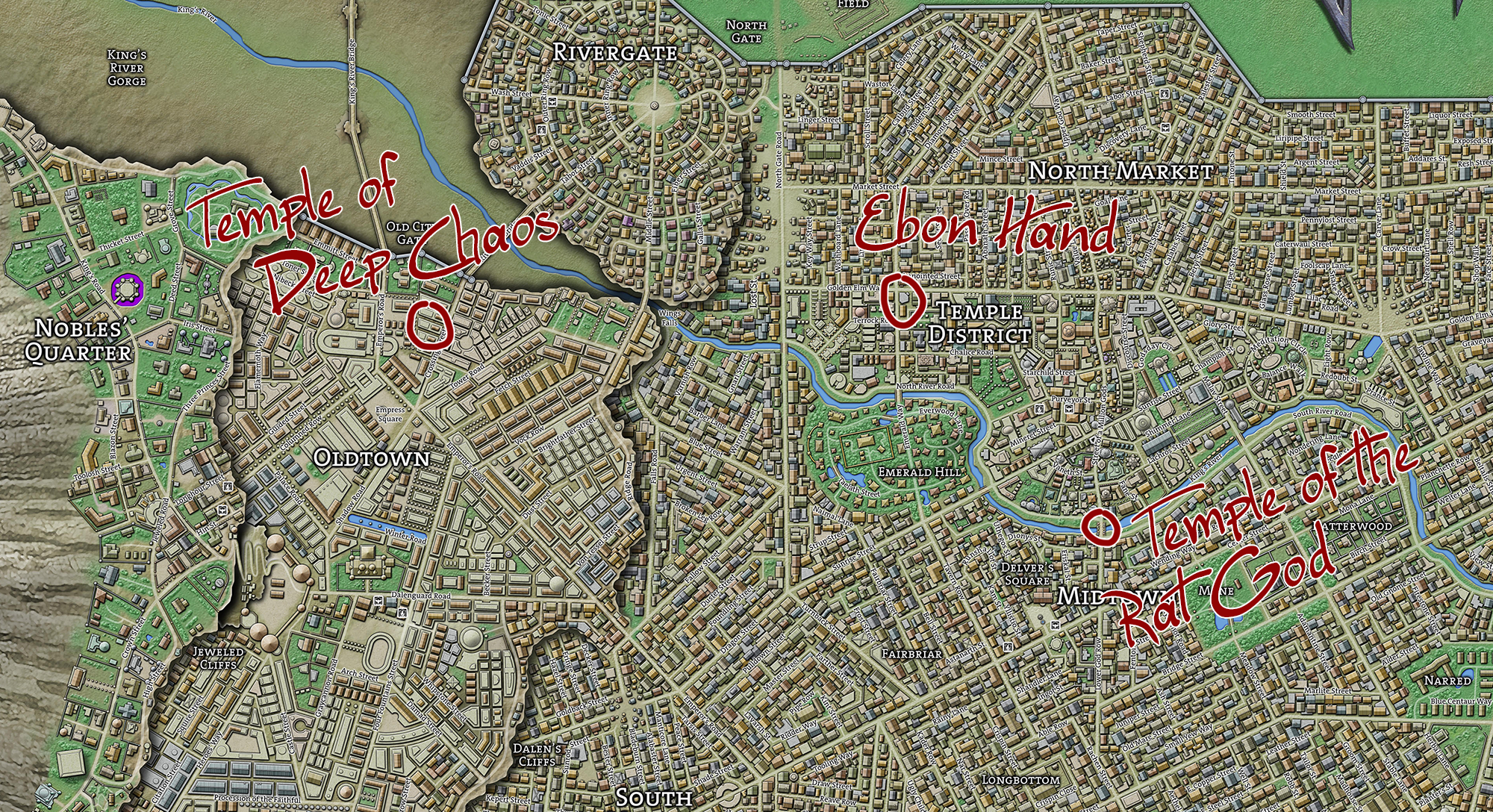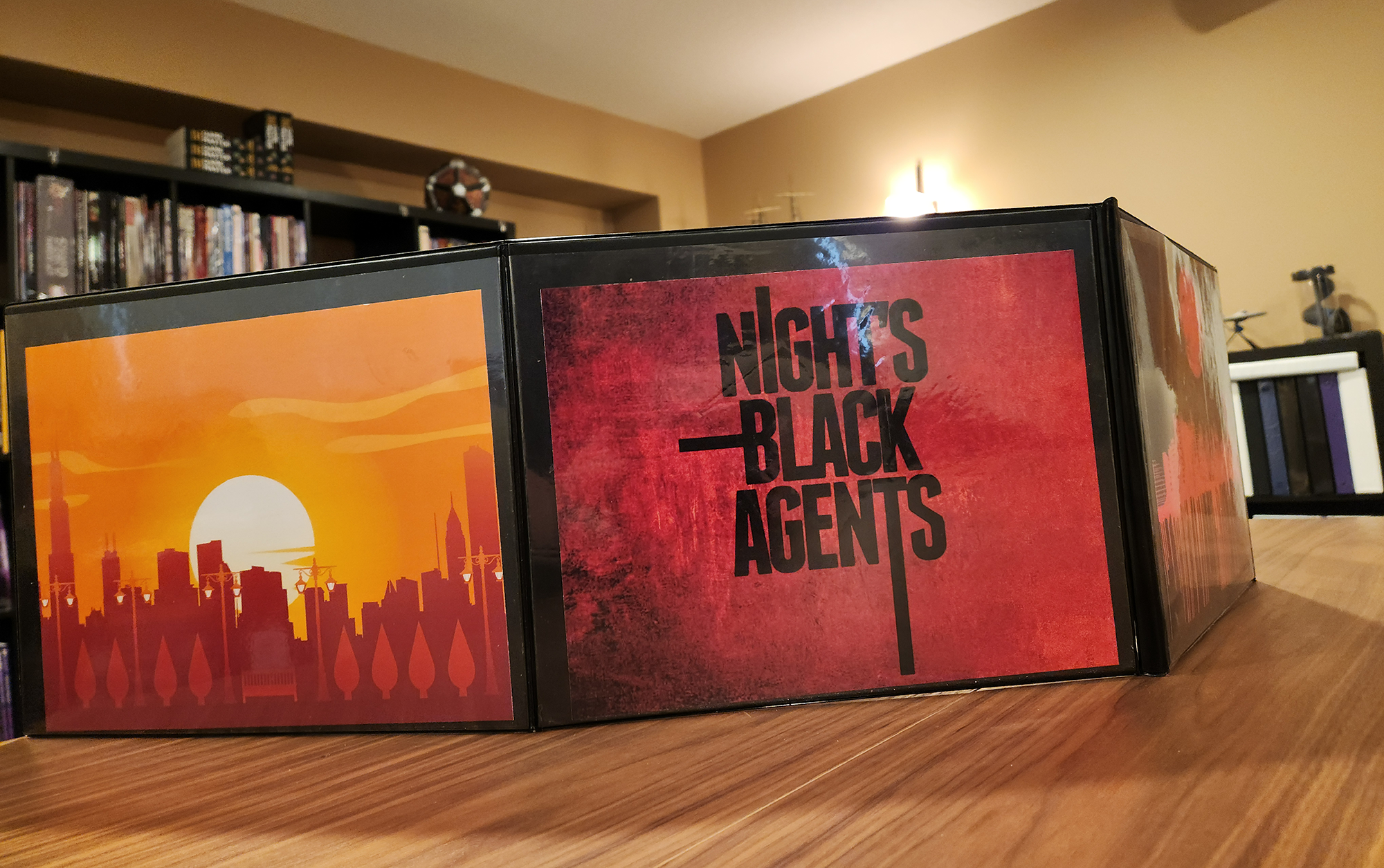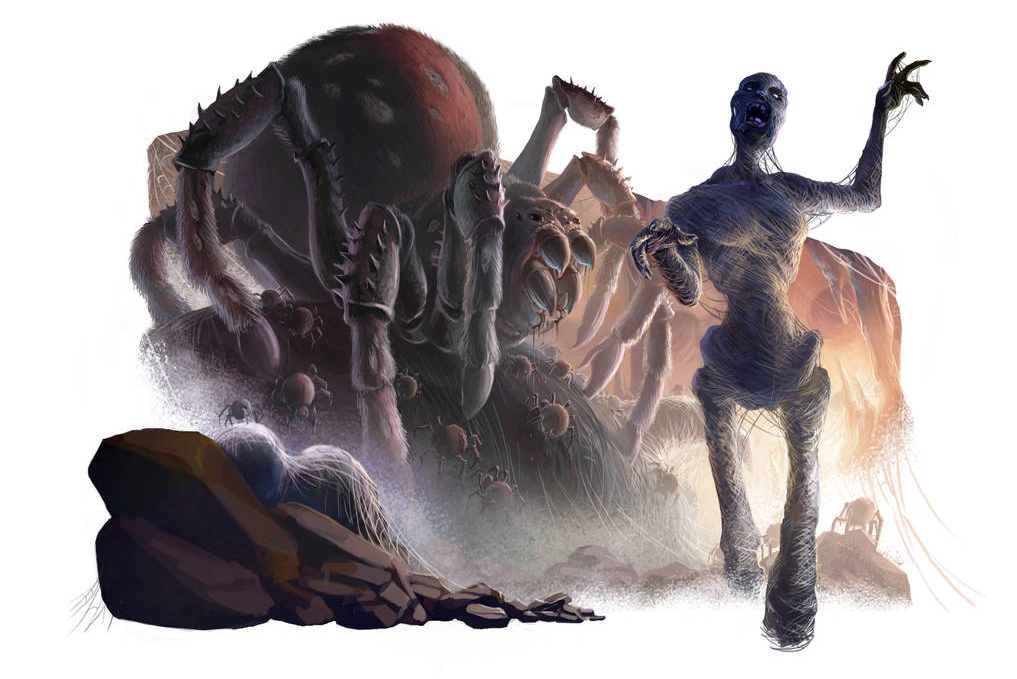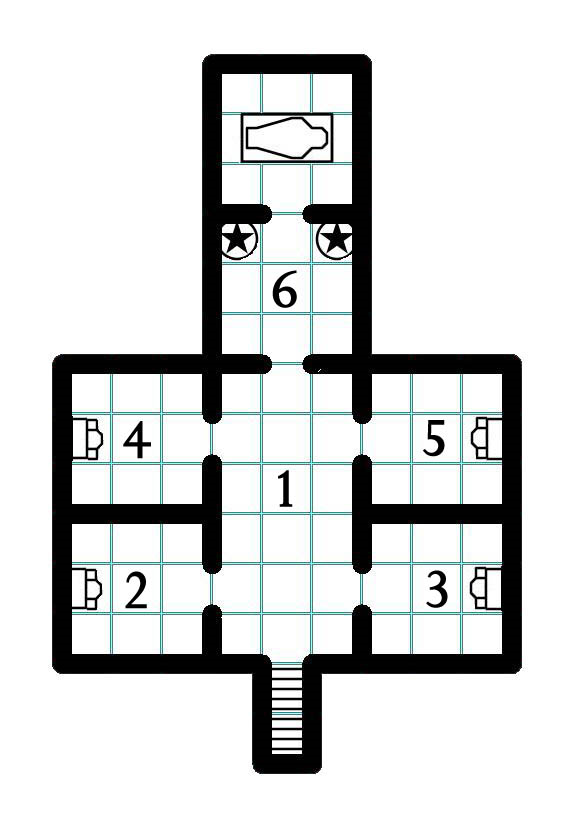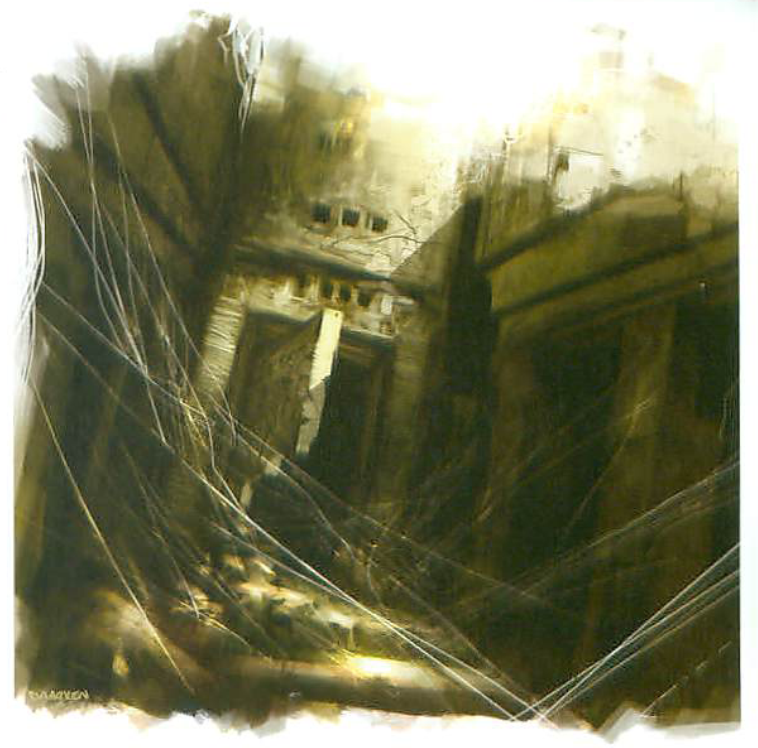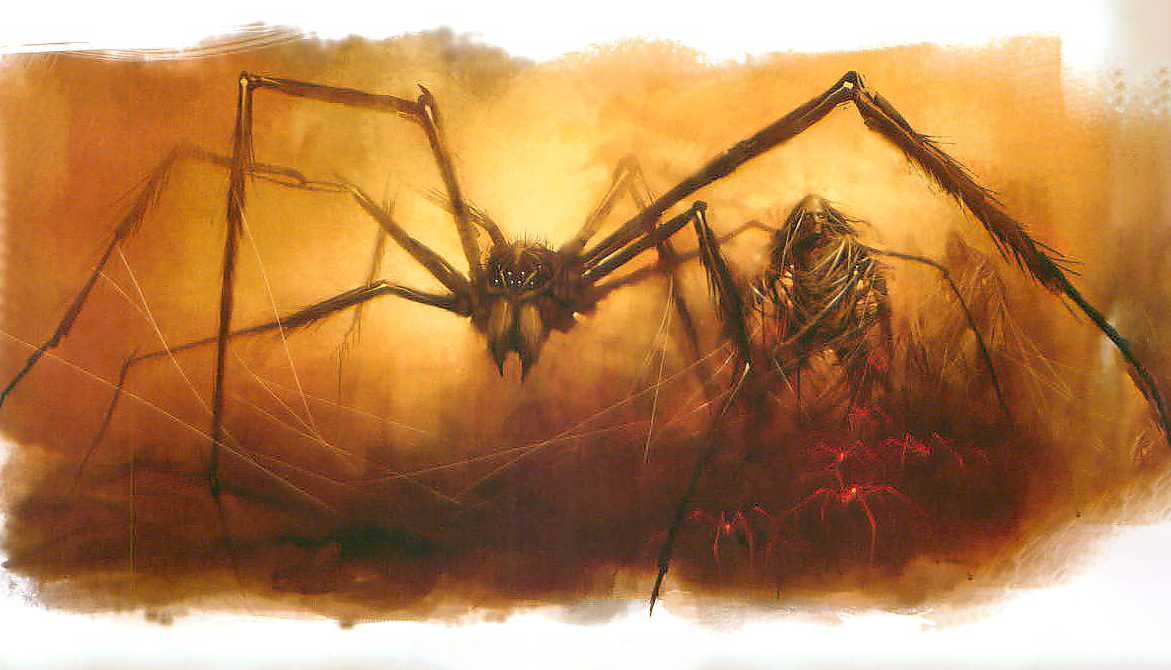DISCUSSING
In the Shadow of the Spire – Session 37A: Dominic Departs
They had an almost impossible number of possible courses to pursue. First, there were the Banewarrens. They had been hired by Jevicca to seal them and by Rehobath to retrieve the Sword of Crissa.
Agnarr raised the possibility of following up on Demassac Tovarian, assuming that Jevicca hadn’t already done so. They knew he was experimenting with chaositech.
“He might even be the one who supplied the items that let the bone rings into the Banewarrens,” Ranthir said.
Ah! Demassac Tovarian!
He’s one of those roads untraveled that almost always crop up here and there in any campaigns that aren’t purely episodic.
(Spoilers: The PCs never actually pursue the Demassac Tovarian lead. Well, I guess at least not yet. We’re still playing the campaign, so I guess it could happen. But it seems extremely unlikely at this point.)
Tovarian was one of the scenario nodes forming Act I of the campaign. The PCs first encountered a reference to him while investigating the Cran crime family in Session 8, but despite frequently mentioning the lead, they never actually pursued it. I actually primed the pump a bit by having a patron (Jevicca) offer to hire them to check out Tovarian’s operation, but in Session 15 they turned down the job because they were too busy with other stuff.
At that point, I figured the Tovarian scenario was dead, and so I was actually a little surprised when it came up during this Second Meeting of All Things – what the players’ called their mega-planning sessions. That’s also something that’s fairly common in campaigns like this: The players will reach back and pull on the most unexpected threads.
In this case, of course, the tugging still didn’t go anywhere.
There were other clues that would have also pointed to Tovarian, but the PCs either missed those clues (because they got captured by Malkeen Balacazar and never explored the smuggler caves thoroughly) or actually missed the entire adventure those clues were placed in. (I don’t think the Ennin Slavers have even been so much as mentioned; the PCs missed them entirely.)
In fact, there were a BUNCH of Act I scenarios that the PCs skipped past. (And which the players remain unaware of to this day.) Tovarian and the Ennin Slavers collectively had a bunch of clues pointing to things like the Swords of Ptolus, Jirraith, and the Pale Dogs. Because the PCs missed both Tovarian and the Ennin, that whole wing of the campaign kinda just fell away.
And that’s just fine.
I’ve previously mentioned that one of the GM’s biggest friends is a simple question asked at the end of every session: “What are you planning to do next time?”
It’s not foolproof, but it will save you from a lot of wasted prep. In this case, I knew how Tovarian and the Ennin and Jirraith and the Pale Dogs and the Swords of Ptolus all connected to each other because I’d prepped a revelation list. But because the PCs never got anywhere near most of those nodes, I never actually prepped the scenarios. So the only thing I “lost” were a few scribbled concept notes.
(Some of which I would eventually circle back to: The Ennin Slavers had connections to the Vladaams, and so they eventually got hooked in from the opposite direction.)
Of these scenarios, the one I spent the most time on was Demassac Tovarian, because there were a few points where I thought the PCs were going to be heading in that direction.
This work included a map of the alley where the House of Demassac Tovarian was located:
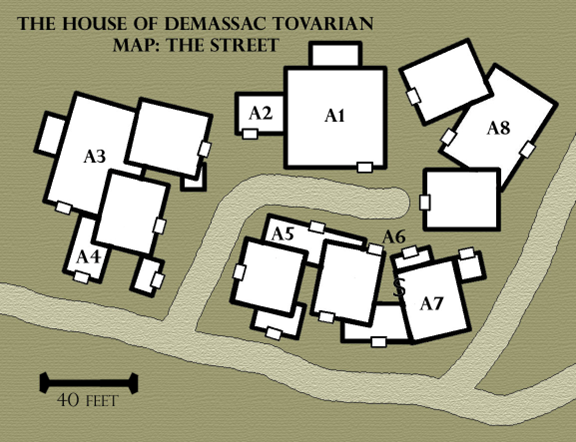
I also mapped the house itself (A1), but as you can see, I never actually finished keying it:
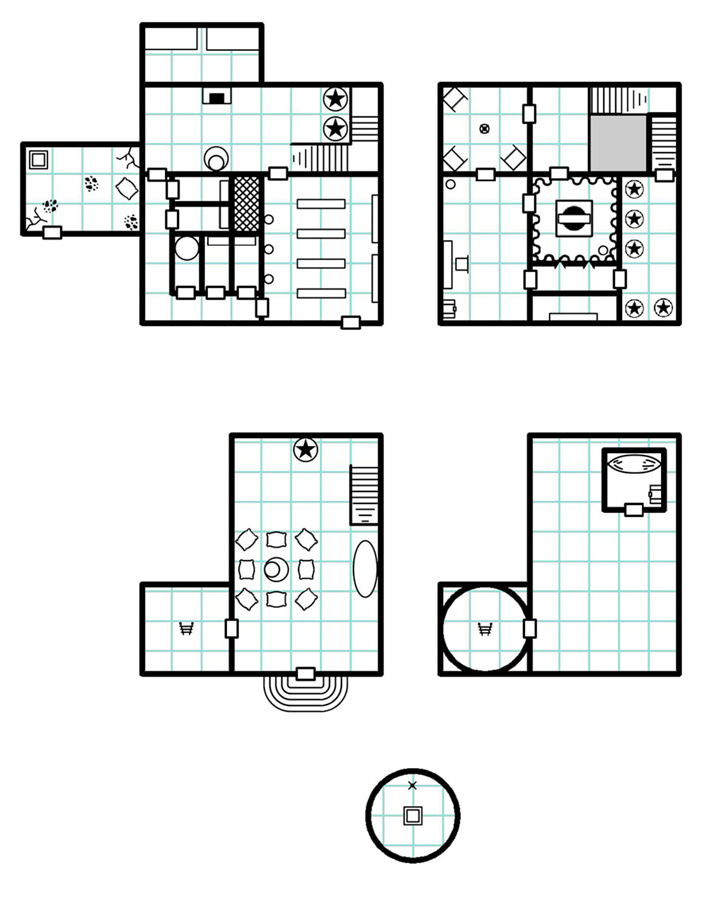
I never got as far as mapping the Undercity located beneath the alley, nor the Tomb of St. Thessina. In the case of the latter, I’m not even sure what my intentions were: The only thing preserved in my notes is the name.
I did have a general vibe in mind for Demassac’s demesne, which was largely inspired by the slightly surreal fantasies of Clark Ashton Smith. He possessed a dream sifter – a piece of powerful chaositech that he used to steal dreams from people. I had several strong images which were the touchstone and inspiration for the adventure, and a handful of these I’d worked up into preliminary room keys, like the Room of Endless Night:
A perpetual gloom shrouds the room. Thick shutters and inky drapes cover the walls and window. The light seems to twist and turn beyond the threshold of the room, casting only a strange phosphorescence that barely illuminates the contents of the room: In one corner of the room stands a heavy basalt statue of a squat, reptilian beast with a grotesque, horned head, stunted bat-like wings, and crooked claws. In another corner there is a sphere of black glass standing on a pedestal of black stone. In the center of the room, a large stone pool or basin is filled with water. Stretched across the top of the pool is a stone slab. The slab has been fitted with manacles.
And the Corridor of Lost Dreams:
This corridor, with a hall at one end of it, is shrouded in a perpetual gloom. Dozens of small glass spheres are suspended on nearly invisible wires here and there from the ceiling. Ghostly sounds of laughter and merrymaking float through the air. Sparks of multicolored light seem to dance through air, leaping sedately from one glass sphere to another.
There’s just enough of Demassac that came into existence that I do sometimes think of him and wonder what might have been, and perhaps some day I will return to this strange alley of madmen, dark technomancy, and strange visions. But for the moment, much like the fleeting dreams Demassac fights so hard to preserve, he has tripped along merrily into a lost realm of imagination.
Campaign Journal: Session 37B – Running the Campaign: No, But…
In the Shadow of the Spire: Index

